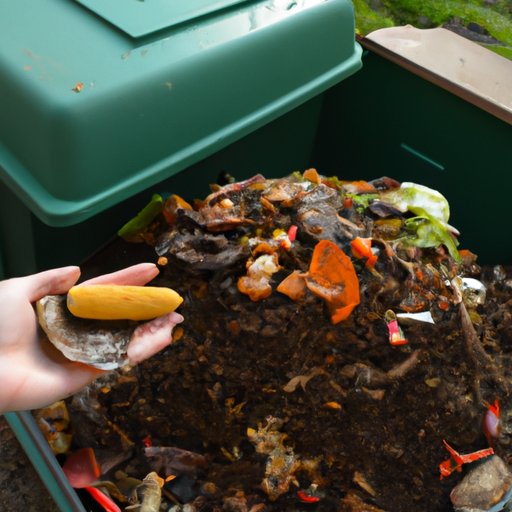Introduction
Composting is a great way to reduce the amount of waste you generate while also creating nutrient-rich soil for your garden or houseplants. It’s an easy and eco-friendly way to make use of food scraps and yard waste that would otherwise end up in a landfill. In this article, we’ll cover all the steps involved in starting a home compost bin, from purchasing or building a compost bin to maintaining your compost pile.
Setting Up Your Compost Bin
The first step in setting up your home compost bin is to purchase or build a compost bin. You can find compost bins for sale in many home and garden stores, but you can also build one yourself using old pallets, wire mesh, or even plastic storage containers. If you decide to build your own bin, it’s important to make sure that it has enough ventilation to allow air to circulate and prevent odors.
Once you have your bin, the next step is to choose an appropriate location for it. It should be placed in an area that gets some sunlight and is not too close to your house or other buildings. This will help to keep pests away and make sure your compost pile stays at the right temperature. You may also want to consider putting a tarp or old sheet under your bin to keep weeds out and contain any spilled material.

What Can and Cannot Be Composted
Once your bin is set up, it’s time to start adding materials. Generally speaking, anything that was once living can be composted. This includes food scraps such as fruits and vegetables, coffee grounds and filters, eggshells, and tea bags. You can also add yard waste such as grass clippings, leaves, and twigs.
It’s important to note that there are certain materials that should not be added to your compost pile. These include meat and dairy products, fats and oils, pet waste, and diseased plants. Additionally, you should avoid adding weeds that have gone to seed, as these can spread throughout your compost pile and take over your garden.
Maintenance Requirements
Once you’ve started adding materials to your compost pile, there are a few maintenance tasks that you should do regularly. The most important of these is turning the compost pile. This helps to aerate the pile and ensure that materials break down evenly. You should turn the pile every week or two with a pitchfork or shovel.
You should also add water to the compost pile as needed. The pile should be moist, but not soggy. If it feels dry, add a bit of water and mix it in with a shovel or pitchfork. You may also need to occasionally add more materials such as leaves or grass clippings to maintain the right balance of green and brown materials.
Potential Obstacles and Solutions
One potential obstacle you might face when composting is odor. As the materials break down, they can produce unpleasant smells. To reduce odors, make sure to turn the compost pile regularly and add plenty of carbon-rich materials, such as dried leaves or shredded paper. Additionally, you can add a few tablespoons of powdered charcoal to the pile to absorb odors.
Another common problem is pests. Rats, raccoons, and other animals may be attracted to your compost pile if it is located too close to your house or other buildings. To prevent pests from getting into your compost pile, keep it far away from your house and other buildings, and make sure to cover the top of the bin with a lid or tarp.
Conclusion
Starting a home compost bin is a great way to reduce waste and create nutrient-rich soil for your garden. By following the steps outlined in this article, you can easily set up your own compost bin and begin reaping the benefits of composting. Not only will composting reduce the amount of waste you produce, but it can also improve the quality of your soil and reduce the need for chemical fertilizers.
(Note: Is this article not meeting your expectations? Do you have knowledge or insights to share? Unlock new opportunities and expand your reach by joining our authors team. Click Registration to join us and share your expertise with our readers.)
